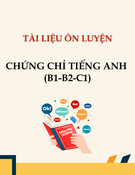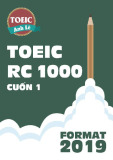
A
1. (A) He doesn't have enough money to buy a printer now.
(B) He's not sure how much a printer costs.
(C) He'll buy a computer later this week.
(D) He lost the money he was saving.
2. (A) Wait to play until after his 9 o'clock class.
(B) Ask Carol to play tennis.
(C) Ask Carol if she's going to class.
(D) Get a tennis lesson from Carol.
3. (A) They should ask for an increase in the budget.
(B) The calculations appear correct to her.
(C) She'll try to see what method was used
(D) They need to make a copy of the budget.
4. (A) He could bring something to the woman
(B) He'd be happy to go with the woman.
(C) He wants the woman to get him a newspaper.
(D) He'd like something to eat.
5. (A) The barbecue has been canceled.
(B) The weather will probably be cool.
(C) The man will not be able to attend the barbecue.
(D) Casual dress will be appropriate.
6. (A) He has had study habits.
(B) He sleeps too much.
(C) He wakes up early.
(D) He's an excellent student.
7. (A) She dislikes fireworks.
(B) She has plans for the evening.
(C) She doesn't feel like going out.
(D) She has to get theater tickets.
8. (A) The library is closed tonight.
(B) He doesn't know how to get to the library.
(C) Jean is using his car.
(D) He won't be able to help the woman.
9. (A) He has received his telephone bill.
(B) His calls weren't listed.
(C) The woman has already paid for her call.
(D) He has received a long distance call.
10. (A) The man should take the stereo back to the store.
(B) The man should refer to the instruction manual.
(C) She'll go to the man's house and help him.
(D) She'll give the man her instruction manual.

11. (A) Candy has been ordered for the machine.
(B) They still have some candy left over.
(C) The machine isn't working right now.
(D) The machine was moved to another building.
12. (A) Discuss a magazine article with the woman.
(B) Help the woman find a new doctor.
(C) Go to the store for some medicine.
(D) Buy the woman some magazines.
13. (A) The plants may need more light.
(B) The plants should get less water.
(C) The area in front of the window is too cold for plants.
(D) Plants rarely do well in the dormitory.
14. (A) The restaurant closes early during the week.
(B) He thought the woman's birthday was next week.
(C) The woman should find out if she can reserve a table.
(D) He won't be able to go with the woman.
15. (A) Find out where their professor is going to perform.
(B) Go to a concert.
(C) Perform in a musical recital.
(D) Interview the violinist.
16. (A) He has to go home to feed pet.
(B) He's expecting Cindy to arrive soon.
(C) He cannot go to Cindy's.
(D) He must keep an appointment with his doctor.
17. (A) Join the dormitory council himself.
(B) Attend the next council.
(C) Persuade the other council members not to quit.
(D) Help the woman find someone to fill the vacancy.
18. (A) The center has just opened.
(B) He's looking forward to using the center.
(C) The door to the fitness center is locked
(D) There are long lines to get into the center.
19. (A) The film committee is full
(B) Being on the committee requires a great deal of
(C) It is difficult to be selected for the committee.
(D) The man needs to sign up another place.
20. (A) Disappointed.
(B) Surprised
(C) Nervous
(D) Uninterested.
21. (A) The weather is usually bad at the picnics.
(B) He'll need a change of clothes for the picnic
(C) He's not looking forward to attending the picnic.
(D) He's looking for a new place to hold the picnic.
22. (A) He agrees that the custodian will have a lot of work to do.
(B) He doesn't want to mess up the clean room.

(C) He wants the woman to speak a little louder.
(D) He doesn't think the woman should talk to the custodian again
23. (A) He usually isn't hungry until lunch time.
(B) His stomach hurts when he eats too fast.
(C) He likes to eat lunch at two o'clock.
(D) He needs to run errands during lunch.
24. (A) He put some notes on the desk last night.
(B) The woman should check with the school
(C) The woman shouldn't have moved his books.
(D) The notebook might be among some other books.
25. (A) Somebody frightened the birds away.
(B) The berries aren't ripe yet.
(C) She doesn't like berries.
(D) The berries aren't good to ear.
26. (A) She thought her hair was too short.
(B) Her new hairstyle is more practical
(C) She cut her hair herself.
(D) She has to tie back her hair.
27. (A) Write his paper on a more general topic.
(B) Take the woman's advice about his paper.
(C) Choose an entirely new topic for his paper.
(D) Retype his paper.
28. (A) She decided not to cancel her appointment.
(B) Her new glasses aren't comfortable.
(C) She's too busy to get a checkup
(D) She has to check when the appointment is.
29. (A) He hadn't noticed any change in Mark.
(B) Mark looks different without a beard.
(C) He thinks Mark looked better with the beard.
(D) He hasn't seen Mark yet.
30. (A) She didn't like the food the man prepared.
(B) She's not a very good cook.
(C) She's annoyed with the man.
(D) She thinks the man spent too much time cooking.
31. (A) She's waiting for her father.
(B) She's having her bicycle repaired.
(C) She wanted to surprise John.
(D) She works there.
32. (A) To replace his stolen bicycle.
(B) To begin bicycling to work.
(C) To join a bicycle club.
(D) To train for a bicycle race.
33. (A) Buy a used bicycle.
(B) Buy a racing bicycle.
(C) Replace the tires on his bicycle.
(D) Sell his old bicycle to the shop.

34. (A) It must be the right height.
(B) It must have several gears.
(C) It must have good tires.
(D) It must be the right weight.
35. (A) On television.
(B) At registration
(C) In class.
(D) At work.
36. (A) Students are not required to attend regular class lectures.
(B) The professor videotapes class lectures for review.
(C) Classes are held at various locations throughout the area.
(D) Students receive credit for work experience.
37. (A) It allows them to meet students from other universities.
(B) It promotes the concept of self-learning.
(C) It allows more flexibility in students' schedule.
(D) It doesn't require any examinations.
38. (A) It's a requirement for psychology majors.
(B) She wasn't able to get into the traditional course.
(C) She lives far from the university.
(D) She has to work a lot of hours this semester.
39. (A) It requires too much traveling.
(B) It limits interaction among students.
(C) It will increase class size.
(D) It will encourage students to watch too much television.
40. (A) He was well known on the West Coast.
(B) He served as James Polk's Vice President.
(C) He supported financial aid to farmers.
(D) He was a popular war hero.
41. (A) He was not interested in political reform
(B) He had an unusual military career.
(C) He had no political experience.
(D) He expressed many controversial ideas.
42. (A) He lost the support of farmers.
(B) He was opposed by the Whig party.
(C) He died early in his term.
(D) He came into conflict with railroad owners.
43. (A) Listen to a talk about another President.
(B) Write a report about Taylor's accomplishments
(C) Discuss the differences between Polk and Taylor.
(D) Begin working on their reports about Vice President.
44. (A) To commemorate a historic flight.
(B) To try out eighty new balloons.
(C) To recruit balloonists from all over the United States.
(D) To determine whether helium balloons are better than hot-air balloons.
45. (A) They may not be able to inflate their balloons.

(B) There are too many balloons to launch at once.
(C) Their flight pattern could be uncertain due to the wind.
(D) They'll lose money if some balloons can't take off.
46. (A) They're expensive.
(B) They were the first kind of balloon ever used.
(C) They're faster than air balloons.
(D) They're popular in the United States.
47. (A) To review what students know about volcanic activity.
(B) To demonstrate the use of a new measurement device.
(C) To explain the answer to an examination question.
(D) To provide background for the next reading assignment.
48. (A) They occur at regular intervals.
(B) They can withstand great heat.
(C) They travel through the Earth's interior.
(D) They can record the Earth's internal temperature.
49. (A) When the Earth was formed.
(B) The composition of the Earth's interior.
(C) Why lava is hot.
(D) How often a volcano is likely to erupt.
50. (A) How deep they are.
(B) Where earthquakes form.
(C) How hot they are.
(D) What purpose they serve.



![Tài liệu luyện thi TOEIC cấp tốc trong 10 ngày [chuẩn nhất]](https://cdn.tailieu.vn/images/document/thumbnail/2025/20251029/kimphuong1001/135x160/99661761725822.jpg)
![Tài liệu Phá đảo TOEIC 900+ từ mất gốc trong 30 ngày [Mới nhất]](https://cdn.tailieu.vn/images/document/thumbnail/2025/20251029/kimphuong1001/135x160/2101761720956.jpg)











